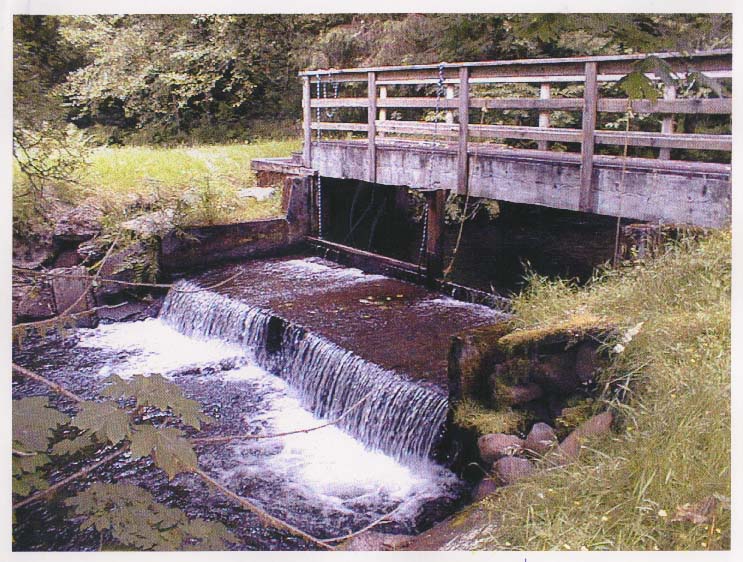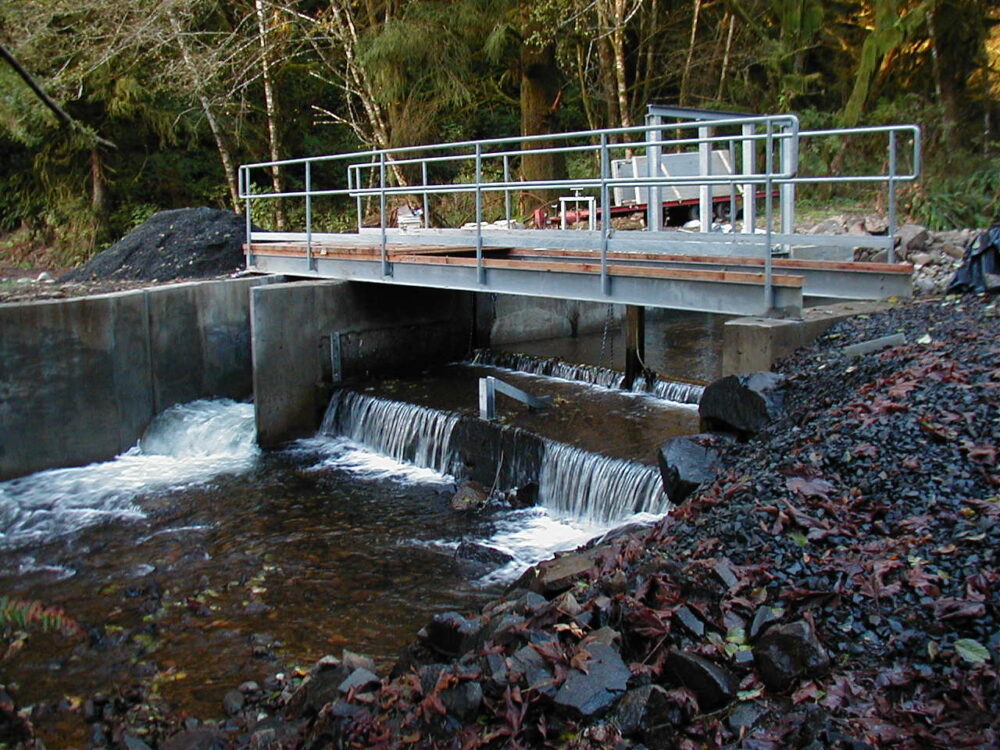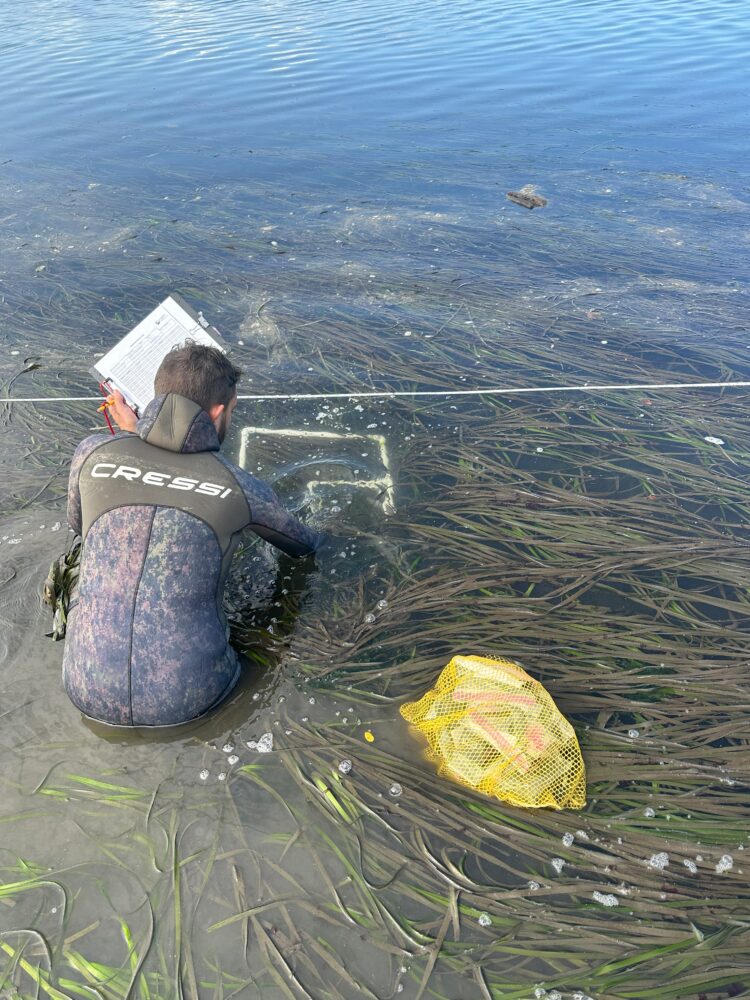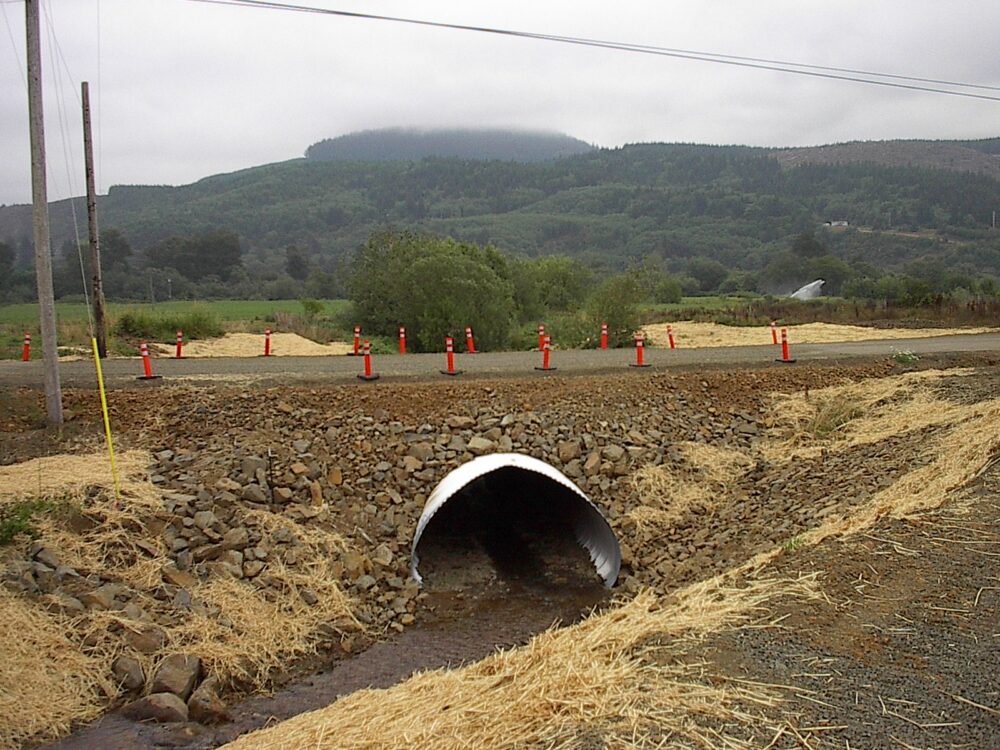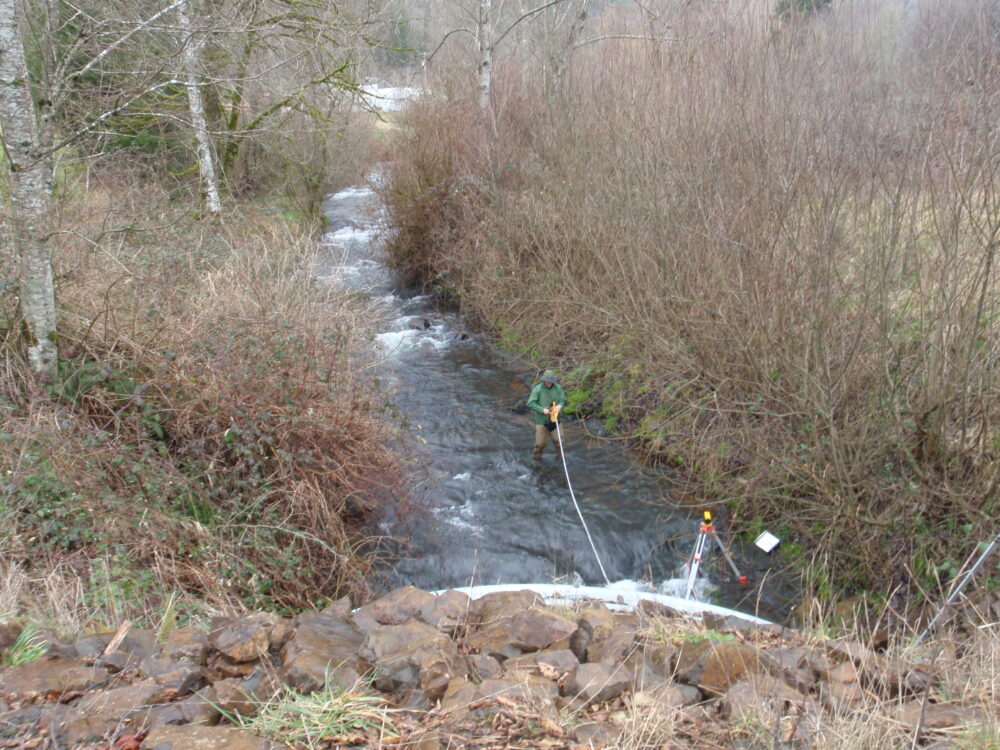Progress

- Pre-assessment (Completed)
- Project Design (Completed)
- Project Started (Completed)
- Project Finished (Completed)
- Monitoring Active (In Progress)
The Fish Got a Ladder, The People Got a Bridge
Tillamook’s Killam Creek Restoration Project (a tributary of the Tillamook River) highlights a successful collaboration between state and local governments and the Tillamook Estuaries Partnership. In 2002, the Oregon Department of Fish and Wildlife (ODFW) identified the City of Tillamook’s water diversion dam on Killam Creek as a barrier to migrating salmonids.
Project Details
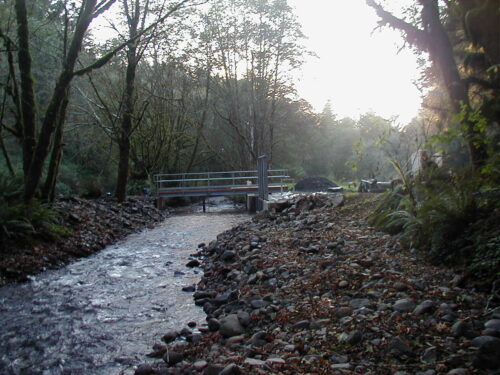
Challenges for Salmon
Killam Creek provides habitat for threatened Oregon Coast coho salmon, and populations of chinook salmon, chum salmon, steelhead trout, and resident and sea-run cutthroat trout. It has a total of nearly six miles of fish habitat in its main channel and tributaries but because of the diversion dam, much of the creek’s best habitat was inaccessible to salmonids. In addition, a concrete channel that led to a nearby settling pond lacked a screening device, so juvenile salmonids were becoming trapped in the pond.
Collaborative Solutions
As a reliable source of clean drinking water since the 1920’s, the City of Tillamook did not want to abandon the location, but they also wanted to be good stewards of Tillamook’s well-loved salmon populations. In partnership with TEP, ODFW, Trout Unlimited, and SJO Consulting Engineers, the City of Tillamook came up with an innovative design that ensured safe passage for fish while maintaining the creek as a key drinking water source. They decided to build a fish ladder around the existing dam structure and to install updated screening devices at the point of diversion. They would also install a float system to control flows. In addition to keeping more water in the stream for fish, this system would also reduce the amount of dirt and debris (sediment) going into the pond to improve water quality.
A win for both fish and people.
The project turned out to be a win for both fish and people. The design provided coastal salmonid populations access to approximately 5.8 miles of additional habitat. According to Arley Sullivan, the City of Tillamook’s Public Works Director, “water clarity has improved as a result of this project, less debris is present in the water, and juvenile salmonids are no longer becoming trapped in the settling pond.” Chris Knutsen of ODFW adds, “not only has this project benefited juvenile salmonids, but we are also now observing coho and chinook using the fish ladder.”
The fish ladder and walking path, before and after construction
